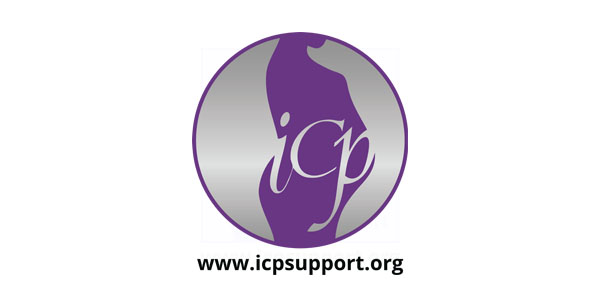Introduction
Intrahepatic cholestasis of pregnancy (ICP), also known as obstetric cholestasis (OC), is the most common liver condition specific to pregnancy. Although the etiology is still being researched, it is known that hormones, genetics and the environment all play a part in why a woman develops ICP. Studies have shown that there is an increased risk of stillbirth in affected pregnancies, although the mechanism for fetal death remains unproven.
Treatment and management of the condition varies around the UK, with no clear guidance for health professionals on what to do for the woman who develops this complex condition. As a result, a few myths have arisen about ICP that we, as a charity, feel are important to dispel. Here are the top three.
Myth – ICP only presents in the third trimester
Reality – Approximately 80% of women will be diagnosed after 30 weeks of gestation, although there are reports in the literature of diagnosis as early as eight weeks and anecdotal evidence that it can develop as early as six weeks.
This means that any woman who presents with itch (pruritus) that is typically nocturnal with no obvious cause should be investigated for ICP. Diagnosis is made by excluding and investigating other causes of pruritus. Blood tests should include liver function, non-fasting bile acids, anti-mitochondrial and anti-smooth muscle antibodies, and hepatitis B and C serology. Most typically in ICP it is the liver function test (namely, alanine transaminase or aspartate transaminase) and bile acid test that show abnormalities. It is not uncommon for bile acid levels to be elevated with a normal liver function test result, but it is also documented that alanine transaminase may rise before bile acids do. Itch often precedes blood abnormalities by some weeks, so repeat testing is essential if itching persists and no other cause has been identified.
Myth – Pruritus only presents on the palms of the hands and soles of the feet; otherwise it’s not ICP

Reality – Pruritus can present anywhere on the body and may be mild or so severe that the women breaks her skin with repeated and frantic scratching. It is also reported as being typically worse at night. It was first thought that bile acids were the direct cause of pruritus, but it is now known that itch does not correlate directly with bile acid levels. More recent research has identified other possible pruritic agents, including lysophosphatidic acid (LPA) and sulphated progesterone metabolites, both of which have been shown to correlate more directly with levels of itch.
Given that it is already known that women can be diagnosed with ICP as early as the first trimester, and that 20% of women will itch in pregnancy, this might raise concerns from health professionals that they could be bombarded with requests for testing. This is not an unreasonable concern, but given the known association with stillbirth and the need to act promptly if ICP is confirmed, we would suggest that the additional influx of queries from women justifies testing to avoid the risk of missing an ICP woman. Whilst many women will simply have pregnancy pruritus, there is no easy way to distinguish these women from those who will have ICP – although the nocturnal nature of the itch in ICP may be a marker. In the future, researchers may be able to introduce a cost-effective way to measure LPA or sulphated progesterone metabolites, but for now vigilance is key, and recognising that itch is not always on hands and feet is important for detecting those women who may be missed simply because their itch is not ‘typical’.
Myth – ICP doesn’t cause stillbirth
Reality – Some women in our social media groups have told us that they are being advised that ICP is, ‘no longer the serious condition that it was once thought to be’. This is a little surprising given that two large prospective cohort studies for ICP identified that elevated maternal serum bile acid concentrations ≥ 40 µmol/L are associated with an increased risk of fetal distress, premature labour (spontaneous and iatrogenic), meconium standing and, in severe cases, stillbirth. Other work has also identified that concomitant conditions such as pre-eclampsia and gestational diabetes mellitus further increase the risk of stillbirth and support emerging data that suggest that all three conditions have an overlap given their abnormal metabolic backgrounds.
The specifics of why and how complications occur are not clear, but reported stillbirths from ICP appear to be both unpredictable and sudden; given that the heart is the one organ in the body that can instantly shut down, it is thought by some researchers that the cause of death might lie here. This has led to the development of the hypothesis that bile acids are implicated, because they are known to cause subtle arrhythmias in the fetal heart that cannot be detected using standard obstetric surveillance, such as cardiotocography. Further work has suggested that UDCA, the current drug of choice for treating women with ICP, might reduce this risk and protect the fetal heart. This all still needs further research (currently being undertaken), but remains the most likely cause of stillbirth.
Conclusion
These three myths are the ones that women complain about most to us. We hope that by raising your awareness of them you will feel more confident about when to test women for the condition, what itching to be aware of, and why bile acid testing matters. Further information about recommended treatment and management of the condition can be found on our website www.icpsupport.org. The RCM also has an iLearn module on ICP that can be accessed by midwives who are RCM members.
About the author
Jenny Chambers has had ICP in all four of her pregnancies, two of which resulted in stillbirth. She founded ICP Support in 1991 and is now CEO for the charity. She also works in a research group led by Professor Catherine Williamson, whose primary focus is ICP, and is based at King’s College London and Imperial College London.




